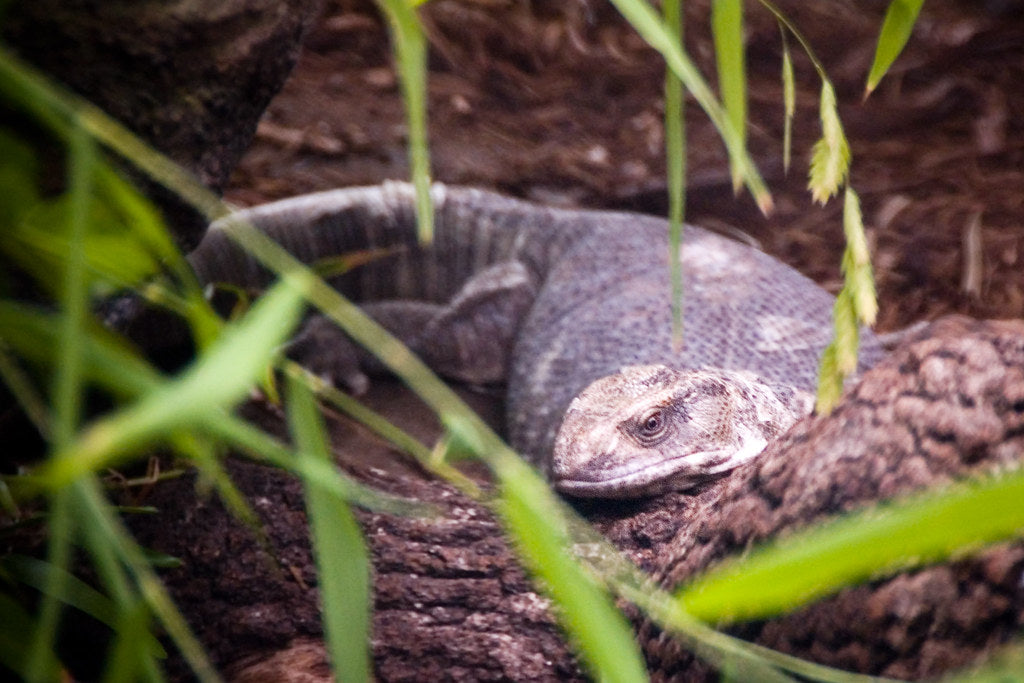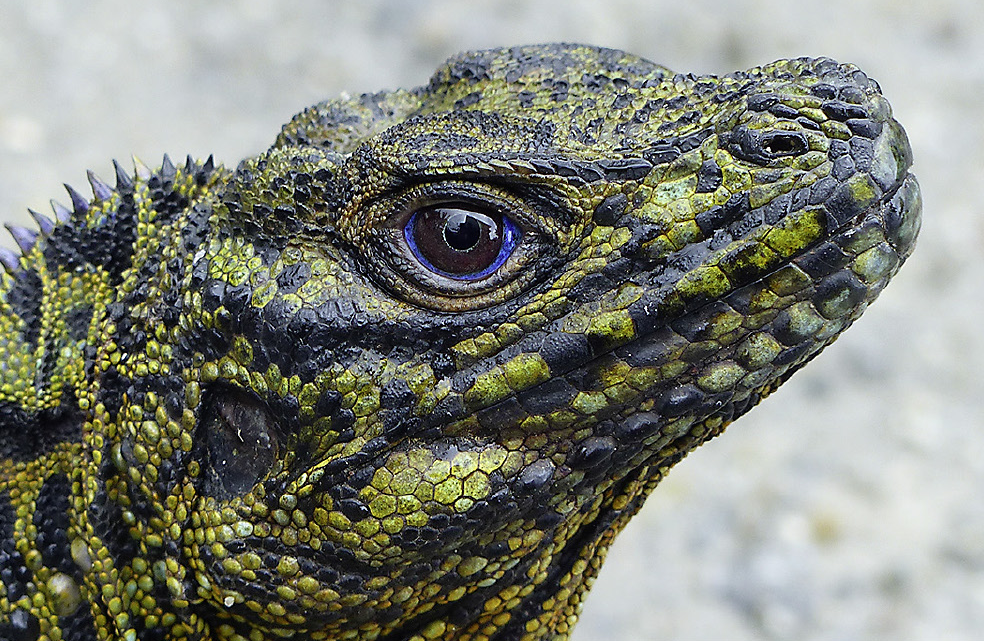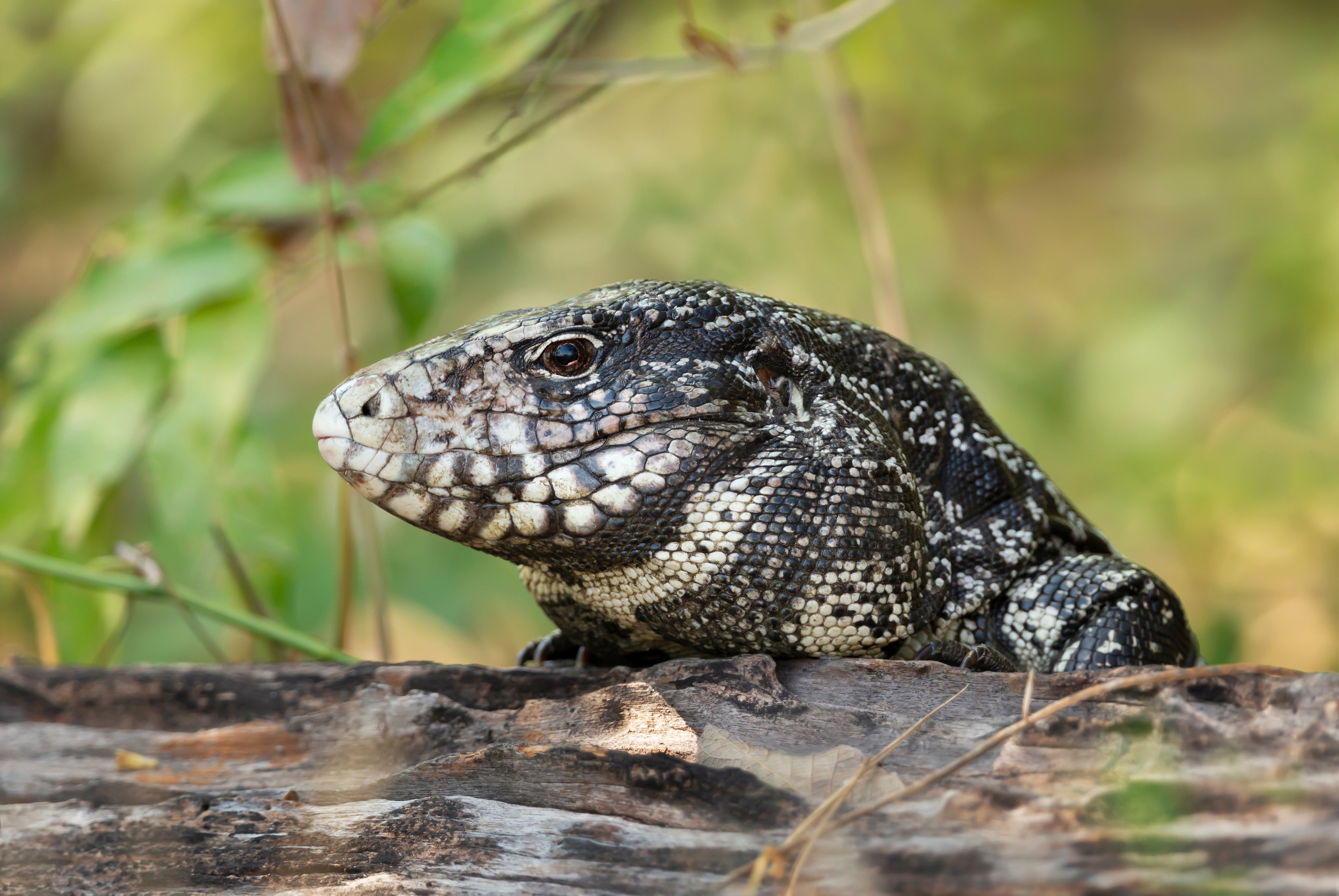Savannah monitors (Varanus exanthematicus) are also known as Bosc monitors. They are large, diurnal, terrestrial lizards found throughout most of sub-saharan Africa. Their preferred habitat is the savannah, but they can also be found in other habitats such as rocklands and woodlands. However, they are not found in rainforest or open desert.
Savannah monitors are gray-brown to yellow-brown in color, with rows of pale spots on their back and pale rings down the tail. The scales on their body are smooth and circular, while the scales on the tail are gently keeled. These monitors are very stocky in build, with a wide head, short neck, and robust limbs.
With excellent care, a pet savannah monitor can be expected to live up to 10-12 years. Despite the fact that they can be purchased rather inexpensively at many pet stores and online, these lizards are not a good fit for beginners, as they require large enclosures, an expensive diet, and lots of research. This is a pet that requires serious consideration and planning before buying on a whim!
How much space do savannah monitors need?
Because of their large size, a single savannah monitor should be housed in no smaller than a 8’L x 4’W x 4’H enclosure. If at all possible, larger is strongly recommended, in addition to regular opportunities to free-roam (supervised) for exercise. This size of enclosure is not typically available for purchase, so you will likely need to order one custom-made or build your own.
Cohabitation (keeping multiple savannah monitors in the same enclosure) is not recommended.
Do savannah monitors need UVB?
Although savannah monitors have been shown to be able to survive without UVB lighting with the right diet, we still recommend providing UVB to your pet as part of providing optimum husbandry. Aside from helping provide a day/night cycle and providing an infinite supply of vitamin D, UVB is also good for the lizard’s overall health.
Here are the best UVB bulbs for savannah monitors housed in a 8’L x 4’W x 4’H enclosure:
The UVB should be mounted inside the enclosure. Elevate the basking surface so your savannah monitor’s back will be 14-16” below the lamp. The UVB bulb should be housed in a reflective fixture like the Arcadia ProT5 and placed on the basking side along with the heat lamp. Make sure that the fixture your UVB bulb is housed in does not have a clear plastic bulb cover.
Savannah monitors are diurnal, which means that they are most active during the day. It’s best to provide 13 hours of light during summer and 11 hours during winter. This simulates natural seasonal changes in day length and encourages healthier hormonal rhythms.
Since savannah monitors are active during the day, it’s beneficial to provide an additional daylight-spectrum lamp to make sure the enclosure is brightly illuminated. This is extra important since you will be using such a large enclosure. Use 6’ of strong 6500K LED or T5 HO fluorescent plant grow lights for best results.
What basking temperatures do savannah monitors need?
Adult savannah monitors need a basking surface temperature of 140-150°F, but juveniles may prefer lower temperatures. The best way to make sure your savannah monitor has access to optimum basking temperatures for its preferences is to build an appropriately-sized Retes Stack.
Air temperature on the cool side of the enclosure can be as low as 75°F, but should be no higher than 85°F. Measure surface temperature with an infrared thermometer (“temp gun”), and air temperature with a digital thermometer placed near the basking site.
Provide heat for your lizard by imitating the sun with a cluster of halogen heat lamps placed on one side of the enclosure. You will need enough lamps to evenly heat an area at least the size of the tegu’s body. Do not use ceramic heat emitters (CHEs), heat mats, red bulbs, or blue bulbs, as these are not as effective.
Heating should be turned off at night.
What humidity levels do savannah monitors need?
Savannah monitors should be kept with an air humidity around 50%, and a moisture-retentive substrate that will allow them to burrow and access more humid microclimates. Air humidity should be measured with a wall-mounted digital hygrometer. Burrow humidity should be measured with a digital probe hygrometer with the probe placed inside the burrow.
To increase burrow humidity/soil moisture content, pour water directly into the substrate.
What substrate is good for savannah monitors?
Using substrate in your savannah monitor’s enclosure covers the floor, cushions your pet’s body, helps maintain humidity, and gives the lizard something to dig around in. We recommend the following substrates for savannah monitors:
- Zoo Med ReptiSand
- Exo Terra Desert Sand
- Play sand
Layering clean, chemical-free leaf litter on top of the substrate can help with humidity as well as add enrichment value.
Substrate should be at least 12” deep (preferably deeper) and completely replaced every 3-4 months. Remove poop and urates daily, along with any contaminated substrate.
What décor can you use in a savannah monitor enclosure?
Savannah monitors are highly intelligent and curious animals, so it’s terribly boring for them to be stuck in an enclosure with nothing in it except a water bowl and somewhere to hide. It doesn’t matter how big the enclosure is if you don’t put things in it for your pet to use and interact with.
Here are some ideas:
- sturdy climbing branches
- hollow logs
- tree stumps
- additional hiding places (dog/cat kennels work well)
- live or artificial grasses
Climbing branches should be well anchored to the walls and/or floor of the enclosure to prevent collapse.
What do savannah monitors eat?
Despite their size, savannah monitors are insectivores, which means that they need to eat a diet of mostly insects in order to get the nutrition that their bodies need. Both juveniles and adults should be fed as many insects as they will eat daily. However, adults should be allowed to fast for half of the year (4-6 months), as this is their natural cycle in the wild, and their bodies are built for it.
Feeder insects for savannah monitors: crickets, dubia roaches, red runner roaches, black soldier fly larvae, mealworms, superworms, darkling beetles, hornworms, silkworms, snails, grasshoppers, scorpions, centipedes, tarantulas
Vertebrate prey, such as mice, young rats, fish, quail, and chicks, should be offered as a rare treat.
Obesity is extremely common in savannah monitors, so if your pet begins to look a bit chubby, reduce the amount of food offered, check basking temps, and increase daily activity.
Supplements
You will also need calcium and vitamin supplements to prevent your lizard from developing a deficiency. We recommend Repashy Calcium Plus LoD, lightly dusted on all insects.
Water
You will also need a large water bowl to help keep your savannah monitor hydrated. Change the water at least twice a week and scrub the bowl with a reptile-safe disinfectant weekly, or whenever it becomes soiled.
Do savannah monitors like to be handled?
As adults, savannah monitors are too large to be held, and as juveniles, they may be too skittish for handling. The key, instead, is to build a trusting relationship with your monitor so it will let you pet it and pick it up when needed. Offering food from feeding tweezers works well as an initial bribe, and it’s best to get the lizard to come to you rather than simply grabbing it — a bite from a startled or defensive adult savannah monitor is no small thing!
If you need to pick up your savannah monitor, be gentle. Don’t grab the lizard from above — instead, approach from the side and scoop from below. Support as much of its body as possible, especially its feet, and hold it close to your body to help it feel secure during carrying.
*This care sheet contains only very basic information. Although it’s a good introduction, please do further research with high-quality sources to obtain additional information on caring for this species.
"savanna monitor lizard (Varanus exanthematicus)" by pochacco20 is licensed under CC BY-ND 2.0




Leave a comment
This site is protected by hCaptcha and the hCaptcha Privacy Policy and Terms of Service apply.